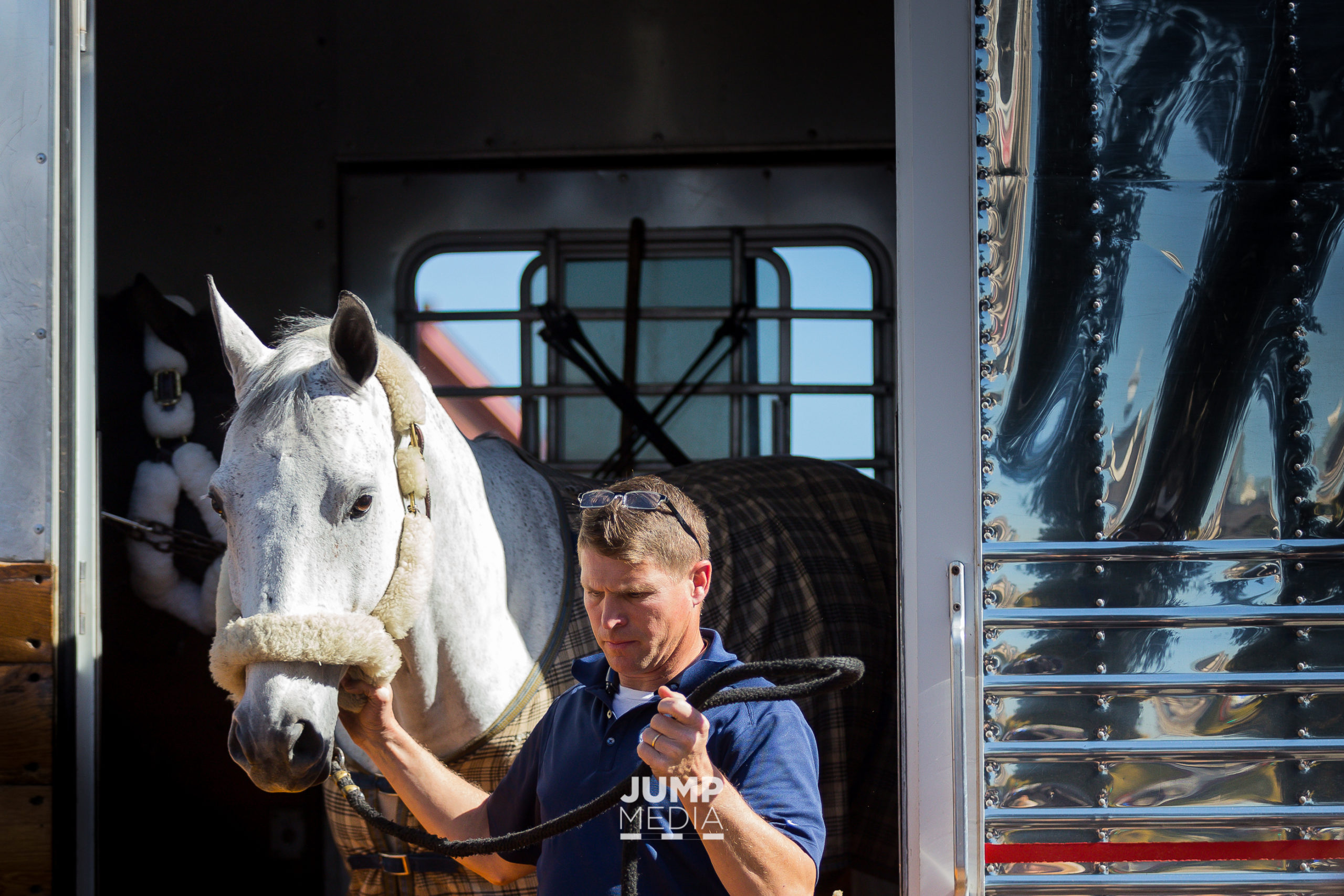While the 2020 show season is anything but typical, many of us are still planning to ship our horses to year-end finals and championships or are preparing to send our horses on a long-distance haul to warmer climates for the winter season.
As horse people, we have likely heard our share of shipping horror stories: a trailer that flipped on the highway, the horse that arrives at its destination with severe shipping fever, or a horse sustaining a substantial injury simply by slipping as it walks off the trailer. Luckily, safe transports outweigh accidents, but there is still an inherent risk in anything we do with these precious yet unpredictable animals. Injuries can happen and often there isn’t an identifiable error.
While so much is out of our control, there are a number of steps and precautions you can take before your horse steps onto the trailer to help ensure a smooth and safe trip.
Ship a healthy horse, maintain a healthy horse
While this may seem obvious, shipping a healthy horse is critical to preserving its health and well-being. In addition to ensuring that your horse is up to date on immunizations, you may also want to consider having a vet conduct an exam to catch things that may not be glaringly obvious. If you are shipping across state lines, this is not only a helpful precaution, it’s likely a necessity. States have varying requirements when it comes to presenting a horse’s bill of health, so do your homework ahead of time to make sure you have the right documentation such as certificate of veterinary inspection (CVI) and negative Coggins.
For a long trip, find out the feeding and watering schedules, how the horses will be monitored while in motion, and if there will be any layovers. Standing on a trailer for long periods of time can be stressful for a horse and problems can crop up quickly, so it’s important to know how the carrier plans to keep your horse comfortable and safe.
Ask beforehand about the positioning and number of horses being transported. We once saw a case where an owner requested compensation after his stallion was attacked by another stallion that had broken loose from the ties on the trailer. Knowing where your horse will be and more about the horses around it could save you a lot of trouble.
You should also understand whether the carrier has any authority to enlist a veterinarian’s care for your horse if an injury requires immediate treatment. Discussing this issue in advance could avoid confusion at the time of an accident when timely care may be critical.
Know you can trust the carrier
While cost is a common concern, a lower price tag may mean higher risk. Your horse’s well-being is in the hands of the transporter, so be sure you are working with an experienced and qualified company that is a licensed carrier in good standing and has the appropriate commercial driver’s license.
It’s also a good idea to go online and explore the reputation and licensure of the transporter or company before you confirm the trip. You may want to verify that the driver’s insurance coverage does not have exclusions that would result in a lack of any coverage for the damages claimed.
For example, a 1988 Court of Appeals decision in Louisiana ruled in favor of the transporter’s insurer and against the owner of horses injured during transport, notably because the clear language of the auto policy excluded property damage to property owned or transported by the insured or in the insured’s care, custody, or control. While it may defy logic that a horse carrier would buy coverage that excluded horses being transported, courts will generally look at the language of the policy to determine the outcome even if it is unfavorable to one of the parties.
Learn the legalities
In addition to determining whether the carrier has the proper licensing and insurance, it’s a good idea to understand a few key shipping and liability legalities in advance, in the event a problem arises.
Should an accident or an injury end up in litigation, know that there may be limitations to a carrier’s liability. In the event your horse is being shipped across state lines and is injured, The Carmack Amendment, now known as the ICC Termination Act, controls the remedies available against the carrier.
Before shipping your horse, familiarize yourself with the term “bill of lading” and review the one that is being signed in connection with your horse’s transport. A bill of lading is a written document that will identify the horse being shipped and is often signed by the person giving the horse to the carrier, commonly the groom or the trainer. The bill of lading may include details such as the value of the horse, limitation of responsibilities of the carrier, indemnification issues, timing of making the claim, and the controlling jurisdiction should a claim be made. Even though the trainer or groom may be the one to sign the document as the horse is given to the carrier, you should be aware that their signature can bind you to the terms because they are presumably acting as agent for you as the owner.
For horse transportation, a typical bill of lading contains a nominal estimate on the value of the horse being shipped. Accepting a low declared value usually equates with lower transport costs and declaring a higher value will result in an increased shipping charge.
Depending upon the value of the horse, a shipper’s risk tolerance, and private insurance coverage options, you can make an informed decision about declaring a value in excess of the value identified in a carrier’s bill of lading. Be sure to review the current insurance coverage for your horse and determine whether it meets your needs if your horse is injured during its trip. If you are not present when the horse ships, ensure that you clearly articulate the declared value to the person that will be signing the bill of lading in your absence.
What if something goes wrong?
There is always some level of risk when dealing with horses, so educate yourself before your horse catches a ride with a transporter. If you find yourself in an unfortunate situation and your horse is injured during its trip, consulting with an attorney immediately could help you determine if legal action is a reasonable next step and, if so, help you figure out how quickly you’ll need to act. If you arrive at the scene of the accident, take photographs of the scene and the injured horse as doing so may provide you with pertinent evidence should a claim be pursued.
While these steps and precautions may sound daunting, putting in the extra effort before your horse travels can help ensure your horse is safe, well-cared for, and with you for the long haul!
This story originally ran on HorseNetwork.com on October 6, 2020.

